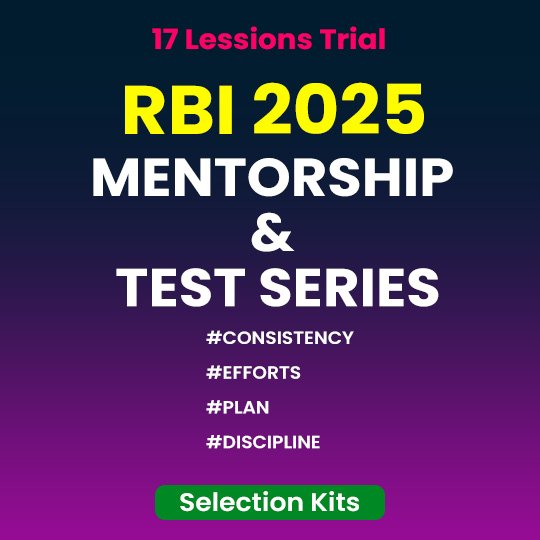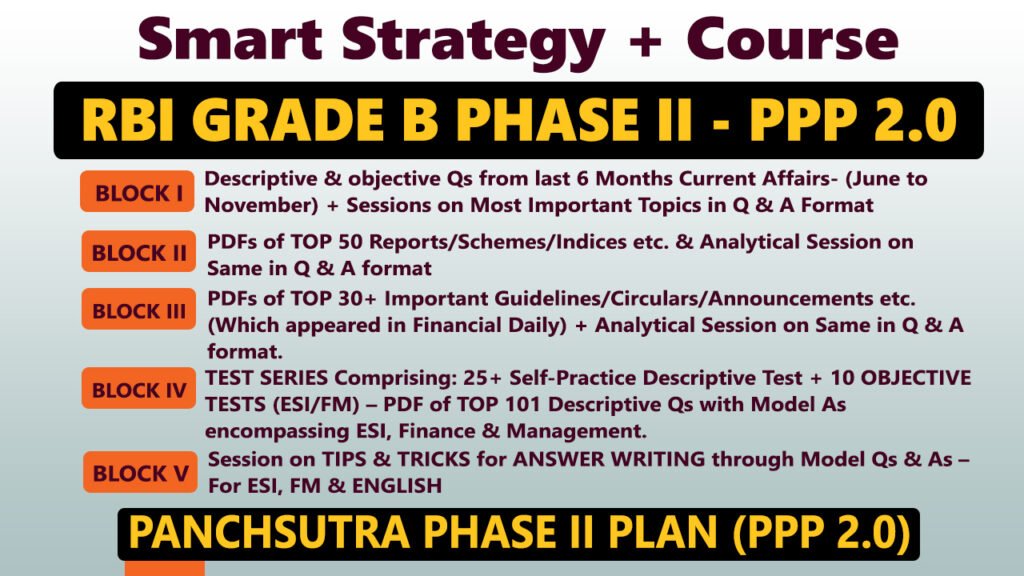Daily Current Affairs Quiz
28 March, 2025
International Affairs
1. Trump Unveils 25% Auto Tariff, Escalating Trade War
Context:
U.S. President Donald Trump announced a 25% tariff on imported vehicles, expanding an ongoing global trade war. The tariffs, effective April 3, 2025, are expected to impact key trading partners, raise vehicle prices, and provoke international retaliation.
Key Details
Who’s Affected?
- The U.S. imported $474 billion in automotive products in 2024.
- The biggest exporters to the U.S. are Mexico, Japan, South Korea, Canada, and Germany.
Trump’s Justification
- Aims to revive U.S. manufacturing and reduce reliance on foreign imports.
- Believes past trade deals have hurt American workers and industries.
- Views tariffs as a revenue tool to offset tax cuts.
Global Reactions
- European Commission President Ursula von der Leyen stated the tariffs are “bad for businesses, worse for consumers.”
- Canadian Prime Minister Mark Carney called it a “direct attack” on Canadian workers and signaled possible retaliation.
- Japanese Prime Minister Shigeru Ishiba suggested Tokyo is considering all countermeasures.
- United Auto Workers (UAW) applauded the move, urging automakers to restore U.S. jobs.
Implications & Future Outlook
Short-Term Impact:
- Higher car prices for American consumers.
- Increased uncertainty in the global auto market.
- Potential drop in vehicle sales and demand.
Long-Term Risks:
- Trade retaliation from affected countries.
- Disruptions to U.S. supply chains.
- Escalating global economic tensions.
Possible Industry Shifts:
- Automakers may shift production to the U.S. to avoid tariffs.
- Rising costs could lead to job losses in supply-dependent sectors.
Trump’s latest tariff move underscores his aggressive economic policy, but whether it strengthens U.S. industry or triggers a deeper trade crisis remains to be seen.
2. India-Myanmar Free Movement Regime (FMR)
Background
- The Free Movement Regime (FMR) along the India-Myanmar border (1,653 km) allows unrestricted movement of people up to 16 km on either side.
- Union Home Minister Amit Shah announced in February 2024 that the FMR would be scrapped, citing security concerns.
- However, no official notification or bilateral agreement has been issued so far.
- The decision was pushed by former Manipur CM N. Biren Singh, linking cross-border migration to ethnic violence.
- Mizoram and Nagaland oppose the move, citing historical and ethnic ties.
How Has the FMR Affected Border Communities?
Henry Zodinliana Pachuau (HZP):
- The border communities have historically engaged in trade and social exchange.
- Mizoram’s economy has grown from this informal cross-border trade.
- The 16 km movement limit is rarely enforced, allowing unregulated trade and migration.
Likhase Sangtam (LS):
- Many border communities are unaware of the FMR because movement has always been unrestricted.
- Ethnic communities share deep historical ties across the border.
- The issue gained importance only due to Manipur’s conflict, not because of security threats elsewhere.
Government’s Security Concerns
- The Centre argues that scrapping the FMR will prevent illegal migration and cross-border crimes.
- Manipur’s ethnic conflict has fueled concerns of foreign involvement.
- Smuggling of drugs, gold, and areca nuts is a major issue, particularly through Mizoram.
HZP’s View:
- Scrapping the FMR won’t stop smuggling, as even strict Border Area Development Programme (BADP) measures failed.
- Criminal networks operate despite border controls, so more enforcement alone won’t solve the problem.
LS’s View:
- The government has legitimate concerns about cross-border security threats.
- However, fencing the border without consulting local communities could create further unrest.
- The instability in Myanmar, drug trafficking, and China’s influence need to be considered before taking a final decision.
Challenges of Fencing the India-Myanmar Border
- Terrain & Logistics: A 1,700 km fence is impractical due to difficult terrain and dense forests.
- Historical & Cultural Ties: Ethnic groups share ancestral lands across the border, making fencing unpopular.
- Risk of Unrest: A border fence could trigger demands for a ‘unified homeland’ among divided ethnic groups.
HZP’s View:
- Even in advanced countries like the U.S., border fencing hasn’t worked.
- A better solution is to enhance customs and monitoring mechanisms rather than sealing the border.
LS’s View:
- Mass protests could erupt if people feel cut off from their communities across the border.
- The government must first educate people and take them into confidence before making a decision.
A Balanced Approach: FMR Reform Instead of Scrapping?
HZP’s Suggestions:
- Legalize and regulate cross-border trade instead of banning it.
- Strengthen border monitoring without disrupting communities.
- Modify the FMR with stricter documentation but avoid a total ban.
LS’s Suggestions:
- Develop a phased approach rather than abruptly scrapping the FMR.
- Ensure that security measures don’t alienate local communities.
- Increase awareness campaigns to gain public support for border reforms.
What’s the Best Way Forward?
- Scrapping the FMR without community involvement could backfire.
- Fencing is impractical and may increase unrest in border regions.
- A balanced solution is needed—one that enhances security while respecting ethnic and economic realities.
- The government should focus on dialogue, better monitoring, and trade regulation rather than rigid enforcement.
The future of the India-Myanmar border policy must balance national security with historical and economic realities to avoid exacerbating tensions.
3. India-US Bilateral Trade Agreement (BTA)
Context:
- India and the US are engaging in intense discussions over the first phase of the Bilateral Trade Agreement (BTA).
- A US delegation, led by Assistant USTR Brendan Lynch, is holding three-day discussions with India’s Commerce Department in New Delhi.
- The goal is to finalize the framework of the deal by month-end, aiming for completion by fall 2024.
Key Discussion Points
- Digital Services & Data Localisation
- The US is concerned about India’s data localisation norms, which mandate storing data within the country under the Digital Personal Data Protection (DPDP) Act.
- US tech companies argue that this could create business uncertainty and limit cross-border data flow.
- Tariff Reductions on Goods
- Both sides are negotiating lower tariffs on various exported and imported goods to enhance trade.
- US Chamber of Commerce (USCC) Concerns
- USCC has raised concerns over strict local content requirements in India.
- It has urged for “competitive neutrality” in key sectors, ensuring equal treatment for foreign and domestic companies.
- India’s Priorities
- India is pushing for easier movement of skilled professionals to the US, seeking improved visa access and employment opportunities.
Next Steps
- Talks are expected to conclude by the end of the month, with an ambitious deadline set for finalizing the trade agreement by fall 2024.
- The outcome will shape India-US economic relations, particularly in digital trade, tariffs, and workforce mobility.
National Affairs
1. X Challenges SAHYOG Portal
Context:
Social media platform X (formerly Twitter) has informed the Delhi High Court that it cannot be compelled to join the Union government’s SAHYOG portal, a move that raises concerns over government control of online content.
What is SAHYOG?
- A government-driven content takedown platform designed to facilitate real-time coordination between law enforcement agencies, social media platforms, and telecom providers.
- A follow-up to an October 2023 memorandum from the Ministry of Electronics and IT (MeitY) under Section 79 of the IT Act, which empowers government agencies to block online content.
Legal & Constitutional Concerns
- Bypassing Section 69A Protections:
- Section 69A of the IT Act allows content blocking only on specific grounds like national security and public order.
- It requires procedural safeguards, such as written justification, independent review, and approval by a designated officer.
- SAHYOG sidesteps these safeguards by enabling multiple government bodies, including state agencies and police, to issue takedown orders.
- Potential for Unchecked Censorship:
- The portal removes opportunities to challenge takedown requests, unlike Section 69A.
- There is no independent oversight, raising concerns of arbitrary content blocking.
- Violation of Supreme Court Precedent:
- The implementation of SAHYOG could be ultra vires, conflicting with the Shreya Singhal vs Union of India (2015) judgment, which struck down vague and overbroad provisions restricting free speech.
X’s Legal Challenge & Government’s Obligation
- X has filed petitions in both the Delhi and Karnataka High Courts, challenging SAHYOG as an unconstitutional restriction on digital platforms.
- The Ministry of Home Affairs (MHA) must disclose full details of SAHYOG to ensure transparency, legal compliance, and safeguards against misuse.
Implications & Outlook
- Free speech concerns: The portal could be used to suppress dissenting voices.
- Legal scrutiny: The High Court rulings on X’s petition will determine the constitutionality of SAHYOG.
- Regulatory balance: The government must ensure content moderation is transparent, legal, and not politically motivated.
X’s resistance highlights a growing tension between the government’s push for online regulation and fundamental rights like free speech and due process.
2. India’s Progress on Sustainable Development Goals (SDGs)
Key Highlights
- India’s SDG index improved from 57 in 2018 to 71 in 2023-24.
- States report an average increase of five units in SDG performance.
- Top-performing states: Kerala and Uttarakhand lead with eight goals exceeding 80% achievement.
Areas of Concern
- Some states show a decline in SDG scores, especially for:
- Goal 1: No Poverty
- Goal 5: Gender Equality
- Goal 10: Reduced Inequality
- Goal 16: Peace, Justice, and Strong Institutions
- Nine or more states reported declines in these goals.
Budgetary Allocations vs. Goal Progress
- Several states, including Odisha, Haryana, and Meghalaya, have high SDG allocations but mixed progress.
- Examples of spending vs. results:
- Odisha: 16.4% expenditure on Goal 4 (Quality Education) but saw a 5-point decline.
- Meghalaya: 12.8% spending on Goal 1 (No Poverty) yet a 14-point decline.
- Haryana: 12.2% allocation to Goal 16 (Peace & Justice) but a 4-point drop.
Key Challenges
- Mismatch between spending and outcomes: Some goals show declining scores despite high investment.
- Measurement & Data Gaps: Progress tracking needs better statistical frameworks.
- Trade-offs between SDGs: Some goals may negatively impact others, requiring comprehensive modeling.
- Regulatory & Implementation Barriers: Need for improved governance in SDG execution.
The Way Forward
- Optimize spending by ensuring funds translate into real progress.
- Strengthen data collection to track SDG performance more effectively.
- Address inter-goal conflicts by analyzing synergies and trade-offs.
- Enhance accountability in SDG planning and policy implementation.
India’s SDG journey shows progress, but strategic interventions are needed to sustain and accelerate improvements.
3. Immigration and Foreigners Bill, 2025
Context:
The Lok Sabha approved the Immigration and Foreigners Bill, 2025, introducing stringent measures to regulate immigration and oversee the movement of foreigners in India.
Key Highlights of the Bill
- Objective: Strengthens national security, streamlines immigration, and enhances India’s global stature.
- Monitoring Mechanism: Ensures real-time tracking of all foreigners entering India, including purpose and duration of stay.
- Economic & Educational Boost: Expected to aid universities in gaining international recognition and bolster trade and manufacturing sectors.
- Long-Term Vision: Aligns with India’s goal of becoming a developed nation by 2047.
Controversial Provisions & Opposition Concerns
- “Arbitrary Powers” to Immigration Officers:
- Opposition MPs argue that the Bill gives unchecked authority to immigration officers.
- Congress MP Manish Tewari criticized the provision that makes immigration officers’ decisions final and binding, leaving no room for appeal.
- Exemptions for Certain Foreigners:
- The opposition raised concerns about selective exemptions granted to certain categories of foreigners.
- Demand for Further Scrutiny:
- Opposition sought referral of the Bill to a joint parliamentary committee, which was rejected.
- Amendments proposed by opposition members were negated.
The Road Ahead
- With the Lok Sabha approval, the Bill will move to the Rajya Sabha for consideration.
- If passed, it will replace older immigration laws and introduce a more stringent and tech-driven immigration framework.
- Likely legal and political challenges expected due to concerns over bureaucratic overreach and lack of appeal mechanisms.
This legislation marks a significant shift in India’s immigration policy, balancing economic facilitation with national security concerns, while also triggering debate over government authority and civil rights.
4. Mental Health Insurance in India
Low Mental Health Claims Despite Legal Mandate
- Less than 1% of total health insurance claims in India are for mental health treatment.
- IRDAI mandates insurers to cover mental illness under the Mental Healthcare Act (MHCA), 2017, yet claims remain minimal.
Key Findings from the Mental Health Report 2025
- Conducted by Marsh McLennan India and Mpower (Aditya Birla Education Trust).
- 42% of survey participants were either unaware of their mental health coverage or did not have it.
- Exclusions in Policies:
- Addiction treatments and rehabilitation centres are not covered.
- Patients who attempt suicide often face claim rejections.
- Some physical health claims are denied if the patient is on psychiatric medication.
Real-World Challenges in Claim Approvals
- Psychiatrist Dr. Harish Shetty noted that most patients struggle to get claims approved due to lack of awareness and hospital clarity.
- Example: A heart attack patient’s insurance claim was rejected because he was on psychiatric medication.
Violations of Mental Healthcare Act (MHCA), 2017
- MHCA Section 21 (4) mandates equal insurance coverage for mental and physical illnesses.
- Indian Journal of Medical Ethics (Nov 2024) Analysis:
- Reviewed 268 health insurance policies from 2020-21.
- 6 policies (2 providers) explicitly excluded mental illness—violating MHCA and IRDAI guidelines.
- 224 policies excluded claims related to attempted suicide or self-injury.
- 267 policies denied coverage for injuries from alcohol or substance use.
- Only 23 policies included outpatient mental health services.
Implications and Way Forward
- Need for Awareness: More efforts are required to inform policyholders about mental health coverage.
- Policy Reforms: Strict enforcement of MHCA guidelines to prevent wrongful exclusions.
- Holistic Coverage: Expansion of insurance benefits to include outpatient mental health services, addiction treatment, and crisis intervention.
Despite legal provisions, mental health coverage in India remains underutilized and poorly implemented, highlighting the need for policy corrections, increased awareness, and stricter regulatory enforcement.
Banking/Finance
1. NSE IPO Faces Delays
Context:
The National Stock Exchange (NSE)‘s long-awaited initial public offering (IPO) has hit another hurdle as the Securities and Exchange Board of India (SEBI) flagged compliance deficiencies. SEBI issued a detailed letter outlining areas NSE must rectify before receiving approval. NSE has been given 24 months to resolve these issues before reapplying for IPO clearance.
Key SEBI Concerns
- SEBI identified regulatory gaps that need resolution before the IPO can proceed.
- The activation of NSE’s International Securities Identification Number (ISIN) was seen as a step towards the IPO, but SEBI’s recent response suggests significant compliance challenges remain.
Current NSE Ownership (as of December 2024)
| Shareholder | Stake (%) |
|---|---|
| Life Insurance Corporation of India (LIC) | 10.72 |
| Aranda Investments (Mauritius) | 5.00 |
| Stock Holding Corporation of India Ltd. | 4.44 |
| SBI Capital Markets Ltd. | 4.33 |
| Mahagony Ltd. | 3.93 |
| State Bank of India (SBI) | 3.23 |
What’s Next?
- NSE must address SEBI’s concerns over the next two years before its IPO can move forward.
- The timeline for NSE’s public listing remains uncertain, delaying what could be one of India’s largest IPOs.
- SEBI’s strict scrutiny highlights the importance of strong governance and compliance before NSE can enter the stock market.
BS
2. RBI Plans to Double Foreign Investor Cap in Listed Firms
Context:
The Reserve Bank of India (RBI) plans to increase the cap on individual foreign investors in listed companies from 5% to 10%. The combined holding limit for all overseas individual investors in a listed company is proposed to rise from 10% to 24%. The move is aimed at boosting capital inflows amid $28 billion in FPI outflows since September.
Policy Expansion to Include All Foreign Investors
- Previously, only Non-Resident Indians (NRIs) and Overseas Citizens of India (OCIs) could hold up to 5% in an Indian company under Foreign Exchange Management Act (FEMA) Schedule III.
- The RBI now proposes to extend this benefit to all foreign investors.
- This reform aligns with efforts to widen India’s investment pool and attract global capital.
Concerns Raised by SEBI
- Market regulator SEBI has flagged monitoring challenges and risks of breaching takeover norms.
- If a single foreign investor and associates hold more than 34%, it could trigger mandatory takeover offers under Indian laws.
- SEBI cautioned the RBI that without robust monitoring, such takeovers might go undetected.
Regulatory Discussions & Next Steps
- The government, RBI, and SEBI are in the final stages of discussion to formalize these reforms.
- While the government and RBI favor the move, SEBI is urging stronger compliance frameworks to prevent misuse.
Implications for Investors & Markets
- The increase in foreign investment limits could boost liquidity and improve market sentiment.
- However, strict monitoring mechanisms may be required to prevent unintended takeovers and ensure regulatory compliance.
3. RBI to Discuss Liquidity Management with Bankers
Key Highlights
RBI’s Upcoming Meeting with Bankers
- Date: April 3, 2025
- Objective: Discuss liquidity management framework and potential changes.
- Context: Possible updates to be announced during the April Monetary Policy Committee (MPC) meeting (April 7-9).
Key Discussion Points
- Banks seek clarity on RBI’s liquidity comfort level relative to Net Demand and Time Liabilities (NDTL).
- RBI’s expected comfort level: 1.5%–2% of NDTL.
- Banks may request guidance on maintaining a specific liquidity percentage.
Pre-MPC Consultation with Economists
- Majority support a 25 basis points (bps) rate cut in the April policy.
- Mixed views on policy stance:
- Some favor shifting from “neutral” to “accommodative.”
- Others advocate maintaining a neutral stance.
Banking System Liquidity Status
- Liquidity improved due to:
- Government spending.
- $10 billion USD/INR swap auction (March 25).
- Net liquidity narrowed to ₹40,788 crore (March 27).
- Recent liquidity trends:
- Deficit of ₹1.57 trillion (March 26).
- Peaked at ₹3.2 trillion deficit in January 2025.
Impact of RBI’s Liquidity Measures
- Swap auction attracted bids worth $22.28 billion against the notified $10 billion.
- Government spending infusion (~₹90,000 crore) expected to bring a mild liquidity surplus by March-end.
- Advance tax and GST payments influenced liquidity shifts.
Outlook for FY26
- RBI measures have successfully injected liquidity ahead of financial year-end credit demand.
- Experts foresee no significant liquidity deficit in FY26.
- MPC meeting outcome will be crucial in shaping liquidity policies further.
Implications
- Potential rate cut and liquidity boost could support economic growth.
- RBI’s stance will affect banking operations, credit availability, and market sentiment.
- Government spending and RBI’s interventions remain key factors in liquidity stability.
4. Sebi Proposes Standardization of Equity Derivatives Expiry Days
Key Proposal by Sebi
- Equity derivatives expiries to be restricted to Tuesdays or Thursdays for each exchange.
- Exchanges must choose either of the two days.
Current Expiry Days (Since January 2025)
- BSE: Tuesday
- NSE: Thursday
NSE’s Recent Proposal & Sebi’s Intervention
- NSE proposed shifting expiry to Monday.
- Sebi’s move aims to standardize settlement cycles and prevent disruption.
- Implication: NSE may have to withdraw its plan to shift expiry to Monday.
Impact on Markets
- Ensures consistency in settlement cycles.
- Prevents exchange-level changes from disrupting market stability.
- Enhances regulatory clarity for traders and investors.
Sebi’s move seeks to streamline derivatives trading while balancing market efficiency and risk management.
BS
5. Self-Regulatory Organization (SRO) in Fintech Sector
Overview of the Fintech SRO Race
- Two key players:
- Fintech Convergence Council (FCC) – Formed a new entity to apply for SRO status.
- Digital Lenders’ Association of India (DLAI) – Competing for the second SRO position.
- RBI’s preference: Two SROs for fintech, similar to the microfinance sector.
- Existing associations: FACE (Fintech Association for Consumer Empowerment) already represents fintech firms.
What is a Fintech SRO?
- Defined by RBI’s May 2024 framework, an SRO is meant to:
- Oversee fintech innovation within regulatory boundaries.
- Promote compliance with laws while encouraging innovation.
- Implement light-touch regulations for self-governance.
- Key requirements for an SRO:
- Independent board with strong leadership.
- Qualified key managerial personnel meeting RBI’s fit-and-proper criteria.
- Diverse membership from different fintech sectors (lending, digital currency, etc.).
- Majority of members must be unregulated fintechs (banks excluded).
Why New SROs are Emerging?
- Regulatory hurdles: Existing fintech bodies (e.g., FCC, FACE) may not meet RBI’s criteria.
- Need for fresh structures: Associations must be restructured or new entities formed.
- Fragmented fintech industry: Diverse business models make it difficult to have a single SRO.
Challenges in Unifying the Sector
- Diverse fintech models: Lending, payments, digital assets, and neo-banking require distinct governance approaches.
- Regulatory compliance burden: Unregulated fintechs must align with RBI’s vision.
- Balancing innovation and oversight: Ensuring fintechs follow the law without stifling growth.
The Road Ahead
- RBI to evaluate applications and grant SRO status based on regulatory compliance.
- Industry collaboration needed to streamline governance.
- Final decision will shape fintech self-regulation and future industry standards.
With fintech rapidly evolving, having multiple SROs may ensure balanced oversight while fostering innovation in India’s digital finance ecosystem.
6. India’s ATM Network Faces Challenges Amid Rising Interchange Fees
Key Reason for the Interchange Fee Hike
- Slowing ATM Growth: The Reserve Bank of India (RBI) increased ATM interchange fees to counter declining ATM expansion.
- Interchange Fees Explained: Banks pay each other for customers’ usage of ATMs outside their network.
- Effective Date: New fee structure kicks in from May 1, 2025.
Factors Contributing to ATM Network Decline
- Bank Mergers & De-duplication: Consolidation of ATM networks reduces overall availability.
- Branch-Based ATM Strategy: Banks increasingly operate two ATMs per branch, one onsite, to optimize costs.
- Urban vs. Rural Divide:
- Urban areas see less impact due to higher ATM density.
- Rural areas face access issues, as ATM density is already low and cash demand remains high.
Potential Effects of Higher Fees
- Stabilizing ATM Numbers: Higher interchange fees could improve ATM profitability, preventing further closures.
- Push for Cashless Transactions:
- Higher fees may deter frequent ATM usage, nudging consumers toward digital payments.
- Free transaction limits remain unchanged for customer convenience.
The Larger Context: India’s Cash Dependency
- Cash in Circulation Rising: Despite digital growth, India’s cash dependence remains strong.
- Key Influencing Factors:
- Informal economy: Large unorganized sectors rely heavily on cash.
- Economic growth: Higher GDP boosts overall cash transaction demand.
- Inflation & Interest Rates: These influence cash-holding behavior but are counterbalanced by financial inclusion efforts.
- ATM Viability Requires Market-Driven Pricing:
- The ATM business model struggles if fees are too low to sustain operations.
- Privately funded ATM networks are crucial for India’s banking infrastructure.
India’s Digital vs. Cash Balance
- India isn’t at a ‘cashless tipping point’ yet.
- ATMs remain vital, especially for rural banking needs.
- Policy must balance cash infrastructure support with the push for digital transactions.
While India continues its shift toward digital payments, ATMs remain indispensable, ensuring smooth financial inclusion. The challenge is to maintain a viable ATM network while advancing digital adoption.
7. RBI Likely to Cut Policy Rate by 25 Basis Points in April: Ind-Ra
Expected Rate Cut & Projections
- Anticipated Rate Cut: 25 basis points (bps) during the April 7-9 MPC meeting
- Current Repo Rate: 6.25%, after a 25 bps cut in February 2025—the first in five years
- Projected Cuts in FY26: Up to three cuts expected, totaling 75 bps. Could bring the real repo rate to 1.5%
Key Factors Influencing RBI’s Decision
- Inflation Trends: RBI will assess core and food inflation before deciding on further easing
- Liquidity Conditions: Liquidity management in the banking system will be a major consideration
- Global Commodity Prices: Rising oil and raw material prices could impact rate cut decisions
Impact of US Reciprocal Tariffs
- Tariff Announcement: US to impose 25% tariffs on car and auto component imports from April 2
- Possible Consequences: Could disrupt trade dynamics and impact India’s economic growth. If trade barriers slow exports, RBI may accelerate rate cuts to support growth
Market & Economic Implications
- Lower Borrowing Costs: Could stimulate credit growth and investment
- Stock Market Impact: Interest-rate-sensitive sectors (banking, real estate, auto) may benefit
- Currency Considerations: A rate cut could put mild pressure on the rupee against the US dollar
RBI’s April rate cut decision hinges on inflation, liquidity, and global economic factors. With Ind-Ra predicting up to three cuts, the central bank’s stance will be closely watched by markets and businesses
8. Finance Bill 2025
Key Objectives of the Finance Bill 2025
- Tax Certainty: Aims to ensure stable tax policies for businesses and individuals
- Ease of Doing Business: Supports domestic businesses, salaried individuals, and exporters
- Revenue-Neutral Approach: Focus on economic growth over aggressive revenue collection
Withdrawal of Equalisation Levy
- Opposition’s Concern: Accusations that India withdrew the 2% digital tax under pressure from US tariffs
- FM’s Response: Dismissed claims, stating that the decision was made in July 2024, before Trump took office
- Global Trade Impact: Move aligns with India’s broader tax and trade policy discussions
Customs Duty Rationalisation
- Long-Term Strategy: Part of Viksit Bharat and Atmanirbhar Bharat economic goals
- No External Influence: Adjustments are based on domestic needs, not global pressures
- Manufacturing Boost: Lower tariffs aim to position India as a global manufacturing hub
Fiscal Deficit & Budgetary Strategy
- Adherence to Fiscal Targets: Government sticking to Fiscal Responsibility and Budget Management Act norms
- Glide Path Strategy: Fiscal deficit on track, ensuring economic stability and growth
- Tax Cuts & Business Incentives: Income tax reductions and tariff adjustments aim to attract investment
The Finance Bill 2025 reinforces tax stability, simplifies compliance, and fosters economic growth. With customs reforms and a balanced fiscal approach, the government is focused on long-term business competitiveness and economic expansion
TET
9. Bank Loans Grow at a Slower Pace in February
Decline in Non-Food Credit Growth
- 10.9% YoY growth (as of February 21, 2025) vs. 20.6% YoY growth a year earlier
- Primary Factors: Slower growth in retail loans and NBFC credit
Retail Loan Slowdown
- 11.7% YoY growth, down from 28.1% in the previous year
- Major Contributors to Decline:
- Unsecured personal loans
- Credit card outstanding balances
- Vehicle loans
Credit to Services Sector
- 12% YoY growth, significantly lower than 24.3% a year ago
- NBFC Credit Decline: Major reason for slowdown
- Bright Spots:
- Computer software sector saw higher credit growth
- Professional services and trade maintained strong momentum
Industrial Credit Trends
- 7.3% YoY growth, slightly down from 8.4% last year
- Key Industries Showing Strong Growth:
- Petroleum, coal products, and nuclear fuels
- Engineering and construction
- Paper & paper products
The sharp decline in retail loans and NBFC credit has dragged overall bank loan growth in February 2025. However, select industries and the computer software sector continue to see healthy credit expansion.
TET
10. Banks May Delay Cutting Special Deposit Rates
Special Deposit Schemes & Expiry
- Many banks launched high-interest fixed deposit schemes with March 31 deadlines
- Despite the expiry, most banks may not withdraw them immediately
- Some may extend these schemes with lower rates
Key Factors Affecting Interest Rate Decisions
- Banks are assessing liquidity conditions and RBI’s monetary policy before making changes
- Wholesale market rates have moderated, but retail rates remain unchanged due to year-end demand
- RBI’s expected rate cuts and government spending boost may lead to deposit rate reductions
Special Deposit Schemes from Major Banks
- SBI Amrit Vrishti:
- 7.25% for 444 days
- 7.75% for senior citizens
- SBI 400-day FD: 7.10%
- HDFC Bank:
- 7.35% for 35 months
- 7.85% for senior citizens
Expected Changes in Deposit & Lending Rates
- Credit demand remains high in March, keeping FD rates steady
- Deposit rates expected to fall in April-June 2025 as liquidity improves
- RBI dividend in May may further ease liquidity, accelerating deposit rate cuts
- Lending rates may decline first, pushing banks to lower deposit rates to maintain margins
Deposit vs. Credit Growth Trends
- Deposit growth (10.2% YoY, ₹225.1 lakh crore) lags behind credit growth (11.1% YoY)
- Banks have been offering higher FD rates to strengthen deposit bases
- High credit-to-deposit ratios may prompt banks to control credit expansion
Outlook
- Rate cuts likely after April, with sharper declines following RBI’s monetary easing measures
- Banks will adjust deposit rates gradually to balance liquidity and lending profitability
11. RBI Mandates Special Clearing for Government Transactions on March 31
Mandatory Bank Participation in Special Clearing
- The Reserve Bank of India (RBI) has directed all banks to participate in special clearing operations on March 31, 2025.
- This is to ensure the accounting of all government transactions within the financial year 2024-25.
Financial Year-End Government Transactions
- India’s financial year runs from April 1 to March 31.
- Agency banks must ensure that all government receipts and payments are accounted for within the same financial year.
- Over-the-counter (OTC) transactions at branches handling government business will remain open till normal working hours on March 31, 2025.
Special Clearing Under Cheque Truncation System (CTS)
- The RBI has decided to conduct special clearing under CTS exclusively for government cheques.
- Clearing Timings on March 31, 2025:
- Presentation Time: 5:00 PM – 5:30 PM
- Return Session: 7:00 PM – 7:30 PM
- Banks must keep their inward clearing processing open and maintain sufficient balance for clearing settlements.
Extended Working Hours for Tax Offices
- Income Tax and CGST offices will remain open from March 29 to March 31, 2025, despite the weekend and Eid-al-Fitr (potentially falling on March 31).
- This ensures smooth processing of year-end government tax collections.
Implications for the Banking System
- Banks will need to adjust liquidity management to facilitate smooth settlements.
- RBI’s move aligns with its broader efforts to ensure seamless financial closure for the fiscal year.
This initiative ensures efficient year-end accounting, uninterrupted tax collections, and smooth financial transactions for government-related payments.
12. 8th State Level Coordination Committee (SLCC) Meeting
Overview of the Meeting
- Date & Venue: March 26, 2025, at Tashiling Secretariat, Gangtok
- Chairperson: Shri Ravindra Telang, Chief Secretary, Government of Sikkim
- Convenor: Shri Thotngam Jamang, Regional Director, RBI
Key Attendees
- Representatives from RBI, SEBI Kolkata, Law Department, Home Department, Finance Department, Information & PR Department, Cooperation Department, and Sikkim Police (IGP CID, IGP Law & Order, DIGP Range, DIGP Special Branch).
Key Discussions & Decisions
- Implementation of BUDS Rules:
- Reviewed progress on enforcing Banning of Unregulated Deposit Schemes (BUDS) Act, 2019 in Sikkim.
- Financial Frauds & Recovery:
- Discussed fraud reports from Helpline 1930 and recovery efforts by Sikkim Police.
- Digital Fraud Prevention Initiatives:
- RBI highlighted trends in digital fraud and measures to curb fraudulent activities.
- Stakeholders exchanged market intelligence on unregulated entities operating fraudulently.
- Role of Sachet Portal:
- Encouraged public reporting of fraudulent financial schemes through Sachet Portal.
- Investor Awareness & Grievance Redressal:
- RBI & SEBI shared updates on their investor awareness programs and customer grievance redress mechanisms.
- Financial Literacy Initiatives:
- The Chief Secretary commended RBI Gangtok’s outreach efforts in spreading financial literacy across the region.
The SLCC meeting reinforced coordinated efforts to tackle financial fraud, regulate deposit schemes, enhance investor awareness, and improve digital security in Sikkim. The RBI and SEBI initiatives will continue to strengthen financial literacy and fraud prevention across the state.
Economy
1. Ecommerce Integration Boosts MSME Growth & Financial Access: ICRIER Survey
Key Findings from the ICRIER Survey
Ecommerce Helps MSMEs Secure Finance
- 51% of ecommerce-integrated MSMEs found their digital presence useful for securing external finance from banks and NBFCs.
- Medium-sized firms (60%) benefited the most, followed by small (55%) and micro (48%) enterprises.
- 30% of integrated firms were able to secure collateral-free loans, with medium enterprises (33%) leading the trend.
Challenges Faced by Non-Integrated MSMEs
- Market access and financing are the biggest hurdles for non-integrated MSMEs.
- One-third of non-integrated firms listed these as their top five challenges.
- Other difficulties include:
- Customer retention
- Hiring skilled employees
- Effective product marketing
Low Participation in Government Schemes
- 55% of MSMEs have not accessed government support programs in the past three years.
- Non-participation rates:
- Micro enterprises – 54%
- Small enterprises – 55%
- Medium enterprises – 60%
MSMEs Perceived as High-Risk Borrowers
- Lack of credit data makes MSMEs less attractive to lenders.
- Limited fixed assets:
- ₹3.18 lakh average fixed assets per MSME in 2022-23.
- ₹2.15 lakh average for manufacturing enterprises.
- Unsecured loans account for only 25% of total MSME credit from banks (as of March 2024).
- Private banks charge high-interest rates, increasing borrowing costs.
Implications & Way Forward
- Ecommerce adoption can help MSMEs access finance, expand markets, and improve business sustainability.
- Policymakers need to enhance awareness and ease access to government support programs.
- Financial institutions must develop better credit evaluation models to reduce MSME borrowing costs.
- Strengthening the digital ecosystem will be crucial for MSME growth in India.
2. MSMEs in India
MSMEs’ Contribution to the Economy
- Share in GDP (Gross Value Added):
- 2020-21: 27.3%
- 2022-23: 30.1%
- Export Growth:
- 2020-21: ₹4 trillion
- 2024-25: ₹12.39 trillion
Key Challenges Hindering MSME Growth
- Lack of Medium-Sized Enterprises:
- India has a large number of small firms, but very few scale up.
- Even large firms often operate through multiple small plants instead of scaling due to regulatory and political risks.
- Regulatory Overheads:
- Compliance burden discourages business expansion.
- Stringent labour laws lead to increased contractualisation of labour instead of formal employment.
- GST-Related Issues:
- Public Accounts Committee Report: MSMEs and exporters face challenges in GST compliance, impacting business operations.
Initiatives to Support MSMEs
- DxEDGE Platform (Launched by CII, NITI Aayog, AICTE)
- Helps MSMEs with digital tools and knowledge for competitiveness.
- Aims to assist small businesses in adopting technology for growth.
- Labour Law Reforms:
- New labour codes passed but not implemented due to lack of consensus.
- Urgent need for stakeholder alignment to facilitate ease of doing business.
- Proposed Deregulation Commission:
- PM Narendra Modi’s Proposal aims to eliminate redundant regulations.
- Can reduce compliance burdens and foster business expansion.
Policy Recommendations
- Implement labour law reforms to simplify compliance.
- Address GST-related concerns to ease tax compliance for MSMEs.
- Fast-track deregulation initiatives to remove unnecessary restrictions.
- Enhance access to technology & finance for MSME growth.
For MSMEs to thrive and drive economic growth, India needs a business-friendly regulatory framework that facilitates scalability, digital adoption, and financial accessibility.
3. NACIN and IMU Sign MoU to Strengthen Marine Enforcement Training
Context:
The National Academy of Customs, Indirect Taxes & Narcotics (NACIN) and Indian Maritime University (IMU) have signed a Memorandum of Understanding (MoU) to enhance marine enforcement training.
Objectives of the Collaboration
- Enhancing CBIC Officers’ Capabilities: Specialized training for marine preventive work.
- Bridging Knowledge Gaps: Focused training on maritime enforcement and operational practices.
- Global & Domestic Insights: Integrating international best practices with India’s enforcement needs.
- Leveraging Expertise: Combining IMU’s academic knowledge with NACIN’s enforcement experience.
Key Benefits
For CBIC Officers
- Hands-on training in advanced maritime technologies.
- Exposure to global enforcement standards.
- Strengthened operational efficiency in marine security.
For IMU
- Expansion of academic programs into maritime enforcement.
- Practical application of maritime training modules.
- Collaboration on emerging technologies, including drone surveillance.
For India’s Maritime Security
- Development of a world-class training ecosystem for marine enforcement.
- Potential inclusion of international participants and personnel from other agencies.
- Establishment of the Marine Customs Training Centre as a Centre of Excellence.
About the Marine Customs Training Centre
- Located at NACIN’s new campus in Palasamudram, Andhra Pradesh, inaugurated in January 2024.
- Equipped with:
- Full Mission Ship Maneuvering Simulators & ECDIS Simulators.
- Training in ship navigation, emergency response, and smuggling interdiction.
- Firefighting drills, search & rescue operations, and firearms training.
- Multi-agency collaboration to improve India’s maritime enforcement capabilities.
About Indian Maritime University (IMU)
- Premier institution under the Ministry of Ports, Shipping, and Waterways.
- Offers specialized training, research, and academic programs in maritime studies.
- Actively collaborates with government and industry to advance India’s maritime sector.
This NACIN-IMU partnership marks a major step in strengthening India’s marine enforcement capabilities. By integrating cutting-edge training, academic excellence, and global best practices, it ensures India remains at the forefront of maritime security and enforcement.
Agriculture
1. Government’s Push for Pulse Procurement & Self-Sufficiency
Key Highlights
- Union Agriculture Minister Shivraj Singh Chouhan announced that tur dal (pigeon pea) procurement has gained momentum in major producing states.
- Objective: Increase domestic production, support farmers, and reduce import dependence.
- Procurement Plan:
- 100% of State production of tur (arhar), urad (black gram), and masoor (red lentil) to be procured under the Price Support Scheme (PSS) for 2024-25.
- The commitment extends till 2028-29 to ensure self-sufficiency in pulses.
States Covered Under the Procurement Plan
- Tur procurement approved for: Andhra Pradesh, Chhattisgarh, Gujarat, Haryana, Karnataka, Madhya Pradesh, Maharashtra, Telangana, Uttar Pradesh.
- Karnataka has extended procurement by 30 days (till May 1, 2024).
Current Procurement Status
- Minimum Support Price (MSP) Procurement Ongoing in: Andhra Pradesh, Gujarat, Karnataka, Maharashtra, Telangana.
- Procurement Agencies: National Agricultural Cooperative Marketing Federation of India (NAFED) & National Cooperative Consumers’ Federation (NCCF).
- As of March 25, 2024:
- 2.46 lakh metric tonnes of tur (arhar) procured.
- 1,71,569 farmers benefitted.
- Prices of tur in Uttar Pradesh are above MSP, indicating strong market demand.
Government’s Long-Term Strategy
- PM-Asha Yojana extended till 2025-26 to ensure continued MSP-based procurement of pulses and oilseeds.
- Focus on stabilizing pulse prices, enhancing farmer income, and reducing reliance on imports.
The government’s expanded pulse procurement policy is a significant step toward ensuring food security, increasing farmer incomes, and boosting self-reliance in pulses production. The commitment to procure 100% production till 2028-29 indicates a long-term vision for agricultural stability and reduced import dependency.
Facts To Remember
1. Tamil Nadu Assembly Adopts Resolution Against Waqf (Amendment) Bill, 2024
The Tamil Nadu Assembly, led by Chief Minister M.K. Stalin, passed a Special Government Resolution urging the Centre to withdraw the Waqf (Amendment) Bill, 2024.
2. Helmet maker Studds files IPO papers with SEBI
Helmets manufacturer Studds Accessories has filed preliminary papers with SEBI to float an initial public offering (IPO). This marks the company’s second attempt to go public. Previously, the company had filed draft papers nearly seven years ago.
3. Sebi cancels registration of 72 research analysts
The Securities and Exchange Board of India (Sebi) has cancelled the registration of 72 research analysts (RAs) who were either inactive, had not paid renewal fee or did not wish to renew the licence.
4. PM Modi to visit Thailand for BIMSTEC summit, followed by Sri Lanka State visit
Prime Minister Narendra Modi will travel to Bangkok, Thailand, for a two-day visit from April 3rd to participate in the 6th BIMSTEC Summit.
5. ISRO successfully completes rolling experiment as part of its SpaDeX mission
The Indian Space Research Organisation (ISRO) has completed the Rolling experiment as part of its Space Docking Experiment (SpaDeX) mission.
6. India wins 1 silver, 2 bronze medals in wrestling at Senior Asian Championship
In wrestling, India bagged one silver and two bronze medals at the Senior Asian Championship in Amman, Jordan. On Day 3 of the competition yesterday, the Indian women grapplers delivered impressive performances, with Reetika securing a silver medal, while Muskan and Mansi Lather each earned a bronze.
7. Over 8.9 crore hospital admissions authorized under Ayushman Bharat: Health Minister JP Nadda
Health Minister JP Nadda today said that more than 8.9 crore hospital admissions worth 1.26 lakh crore rupees have been authorized under Ayushman Bharat -Pradhan Mantri Jan Aarogya Yojana as of 1st March this year.



















